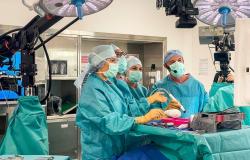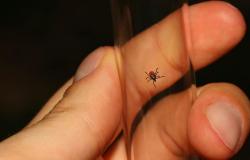Some children with autism experience significant, lifelong difficulties, such as developmental delays, social difficulties, and even an inability to speak. Others have milder symptoms that improve over time. A new study, published in Molecular Autism [1] by researchers at the University of California at San Diego, is the first to shed light on this question. According to its results, the “ biological basis » of these two subtypes of autism develops in utero.
Personalized organoids
To work on this subject, the researchers used the blood stem cells of 10 children aged 1 to 4 years suffering from idiopathic autism, in other words for which no genetic cause has been detected. These cells were used to make cerebral cortex organoids, that is to say “ models of the fetal cortex “. They also created cortical organoids from six children “ neurotypiques “. Hundreds of organoids were generated from each patient (see Research on brain organoids: a question of conscience).
Often called gray matter, the cortex lines the exterior of the brain. It contains tens of billions of nerve cells and is responsible for essential functions such as consciousness, thinking, reasoning, learning, memory, emotions and sensory functions.
Larger organoids that grow faster
Examination of these organoids showed that those corresponding to autistic children are “ significantly larger » – around 40% – than those in the control group. Furthermore, the larger the size of the organoid, the more severe the patient’s social and language symptoms.
So ” it is not necessarily true that the bigger the brain, the better », deciphers Alysson Muotri, professor at the Faculty of Medicine at the University of San Diego and co-author of the study. “ We found that in the brain organoids of children with profound autism, there are more cells and sometimes more neurons – and this is not always for the better “, she emphasizes.
Furthermore, the more severe a child’s autism, the more quickly the organoid corresponding to it develops, sometimes to the point of developing a ” excess neurons “, the researchers were able to observe.
Having established that growth excessive ” of the brain begins in utero, researchers hope to determine the cause, in order to develop a therapy that could improve the ” intellectual and social functioning » of people with autism.
[1] Courchesne, E., et al. (2024) Embryonic origin of two ASD subtypes of social symptom severity: the larger the brain cortical organoid size, the more severe the social symptoms. Molecular Autism. doi.org/10.1186/s13229-024-00602-8.
Source : News medical, University of California – San Diego (05/06/2024)






